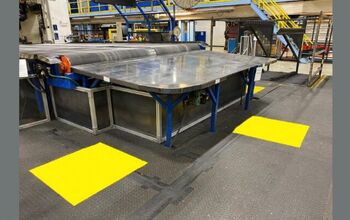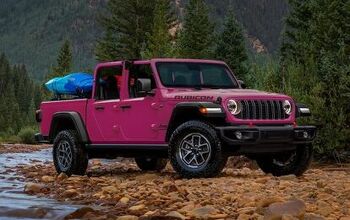As the Chevrolet Bolt's U.S. Sales Cool Off, GM Readies a Production Boost

As promised by General Motors CEO Mary Barra in March, GM plans to crank out additional Chevrolet Bolts at its Orion Assembly Plant in Michigan later this year. The need for extra output isn’t because of rising sales in the United States, however.
In GM’s second-quarter 2018 sales report, the Bolt’s U.S. tally fell to 3,483 vehicles, down from Q1’s 4,375 deliveries, as well as Q2 2017’s 4,500 units. Last year’s Q2 sales came when the Bolt hadn’t even reached all U.S. markets. No, GM needs more Bolts because other countries want them.
“Demand for the Chevrolet Bolt EV, especially in the United States, Canada and South Korea, has outstripped production,” said Kurt McNeil, U.S. vice president, Sales Operations, in a statement. “The extra production coming on line should be enough to help us keep growing global Bolt EV sales, rebuild our U.S. dealer inventory and bring us another step closer to our vision of a world with zero emissions.”
The 20-percent boost in Bolt production (compared to the first three quarts of 2018) begins in the fourth quarter of this year. GM estimates its global Bolt sales rose 35 percent in Q2, or 40 percent over the first half of the year. Keep in mind that Bolts were still just trickling out at the beginning of Q1 2017.
As the Bolt soldiers on as the market’s only low-cost, long-range EV (Tesla doesn’t expect entry-level Model 3 deliveries for another 6 to 9 months), the “original” GM electric — the extended-range Chevrolet Volt — sees its sales continue to slide. Second-quarter volume sunk 19.2 percent compared to the same period last year. Year to date, Volt sales have fallen 28.5 percent.
GM seems to know it needs to do something to sweeten the Volt pot. Last week, the automaker announced a host of changes to the 2019 model, among them an available power driver’s seat and other upgraded creature comforts. Most importantly, the 2019 Volt allows users to charge its battery nearly 50 percent faster.
By making it easier to gain a full charge at home or during short stops at public recharging stations, GM feels buyers might think differently of the model, which travels 53 miles on a charge before the gasoline generator takes over electricity production.
[Image: General Motors]

More by Steph Willems
Latest Car Reviews
Read moreLatest Product Reviews
Read moreRecent Comments
- Scott Read through and everyone seems to have missed the main question:Is Tim Healy an old geezer now?"Or is it just a crossover world and I'm now an old guy* tilting at windmills and yelling at clouds?"
- ToolGuy My latest vehicle acquisition is slightly older than this one, same parent company, but has a full frame, rear-wheel drive and a longitudinally-mounted pushrod V8 gasoline engine. Almost like it was engineered and manufactured by a completely different group of people. Hmmm...
- EBFlex Smart people
- Wjtinfwb "Rovelo" tires? Good to see TTAC is not above the shameless commercial endorsement of unknown product like it's bigger print competitors.
- Wjtinfwb Looks in decent nick for a Junkyard car. Other than the interior being partially gutted for some trim pieces, you could probably drive it out of the junkyard. Maybe a transmission issue and the cars value precluded a $2k or more fix? J cars were pathetic when introduced in '82 and never really got any better. But GM did sort out most of the reliability issues and with a modicum of maintenance these would run a long time if you could stand the boredom. Guess this owner couldn't.


































Comments
Join the conversation
Does anyone know if GM is still taking a loss on the Bolt/Volt combo?
Waiting of CPO Bolt for 15K